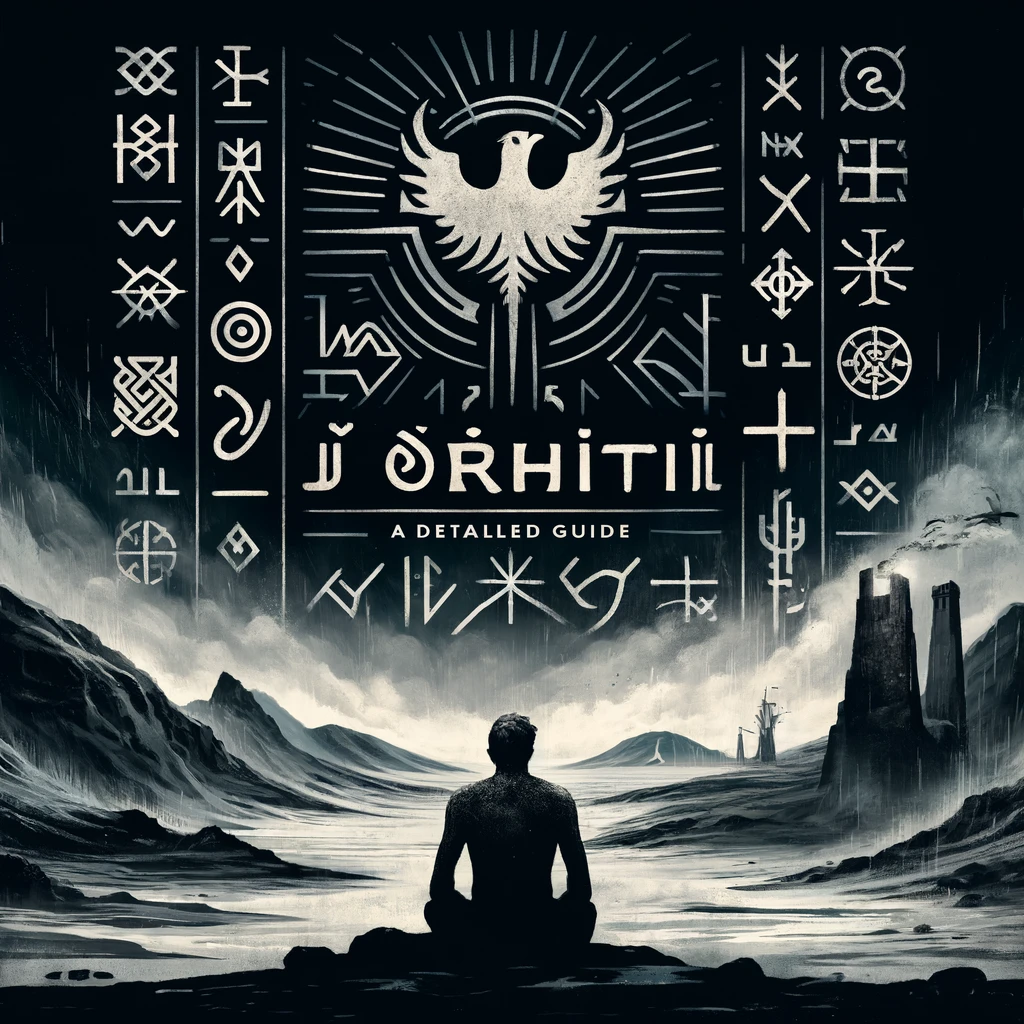Örviti is an intriguing term from Icelandic culture that means “madness” or “insanity.” This concept, steeped in history and tradition, offers a unique look at how extreme mental states were understood in ancient times. In this article, we will explain what örviti is, why it is important in Icelandic literature and mythology, and how it connects to modern discussions about mental health. By exploring örviti, we aim to show its timeless relevance and the insights it offers into human emotions and mental well-being.
Why is Örviti Important in Icelandic Culture?
Örviti is deeply embedded in Icelandic culture. It appears in various sagas and stories, representing a state of extreme emotional or mental disturbance. Understanding örviti helps us appreciate the richness of Icelandic heritage and the way mental states were perceived in ancient times.You can also read The Basic Economic Problem Results from Scarcity.
How is Örviti Used in Literature?
In Icelandic sagas, örviti often describes characters who have lost their sense of reality due to grief, rage, or supernatural influence. These stories provide a glimpse into how people in the past dealt with intense emotions and mental health issues.
What Are the Modern Interpretations of Örviti?
In modern times, örviti is used more broadly to describe any form of madness or irrational behavior. It can be used in literature, film, and even everyday conversation to convey a sense of extreme emotion or mental breakdown.
How Does Örviti Relate to Mental Health?
While örviti is an ancient term, it parallels many modern concepts of mental health. It highlights the timeless nature of human emotions and the universal struggle with mental well-being. Understanding örviti can lead to a deeper appreciation of mental health issues and the importance of addressing them.
What Can We Learn from Örviti?
Learning about örviti offers insights into the historical and cultural context of mental health. It shows how different societies have understood and depicted extreme emotional states. This knowledge can foster empathy and a better understanding of mental health challenges today.
How is Örviti Depicted in Media?
In media, örviti is often depicted as a dramatic and intense experience. Films and books might use the concept to create powerful stories about human struggles and triumphs. These portrayals can help raise awareness about mental health issues and encourage conversations about emotional well-being.
Why is Örviti Relevant Today?
Despite being an ancient term, örviti remains relevant today. It serves as a reminder of the enduring nature of mental health challenges. By studying örviti, we can gain valuable perspectives on how to approach mental health in contemporary society.
How to Use Örviti in Conversations?
Using örviti in conversations can add depth to discussions about mental health and emotional experiences. It can be a way to express extreme emotions or to discuss the impact of intense situations on mental well-being.
How Can Örviti Influence Mental Health Awareness?
Örviti can be a powerful tool in mental health awareness. By exploring its historical and cultural significance, we can create a bridge between ancient wisdom and modern understanding. This can help destigmatize mental health issues and promote a more compassionate society.
What Role Does Örviti Play in Icelandic Sagas?
In Icelandic sagas, örviti plays a crucial role in character development and plot progression. It often marks a turning point in the story, where characters face their deepest fears and emotions. This makes örviti a compelling element in these ancient narratives.
How to Research Örviti?
Researching örviti involves delving into Icelandic literature and historical texts. It requires an understanding of Norse mythology and the cultural context of the time. Modern interpretations and academic studies can also provide valuable insights.
What Are Some Famous Examples of Örviti?
There are many famous examples of örviti in Icelandic literature. Characters like Egill Skallagrímsson and Guðrún Ósvífursdóttir exhibit states of örviti in response to grief, betrayal, and supernatural encounters. These stories highlight the intense emotional landscapes of the sagas.
How Does Örviti Compare to Modern Mental Health Terms?
Örviti can be compared to modern terms like psychosis or emotional breakdown.While the contexts and understandings have evolved, the core experience of extreme mental disturbance remains similar. This comparison can help bridge the gap between ancient and modern perspectives.
Why Study Örviti?
Studying örviti offers a unique window into the human psyche and cultural history. It enriches our understanding of how different societies have viewed and managed mental health. This knowledge can inform contemporary approaches to mental health care and support.
How to Explain Örviti to Others?
Explaining örviti to others involves highlighting its historical roots and cultural significance. Emphasize its role in Icelandic sagas and its relevance to modern mental health discussions. Use examples from literature and media to illustrate its impact.
What Are the Challenges in Studying Örviti?
Studying örviti presents challenges such as language barriers, interpreting ancient texts, and understanding the cultural context. However, these challenges also make the study rewarding, as it offers deep insights into a unique aspect of human experience.
How Can Örviti Inspire Creative Works?
Örviti can inspire creative works by providing a rich source of emotional and psychological depth. Writers, filmmakers, and artists can draw on the concept to explore themes of madness, grief, and resilience. This can lead to powerful and impactful stories.
What Are the Common Misconceptions About Örviti?
Common misconceptions about örviti include viewing it solely as a negative or destructive force. While it often involves intense and challenging experiences, örviti can also lead to growth and transformation. Recognizing this duality is important for a balanced understanding.
How to Approach the Study of Örviti?
Approaching the study of örviti requires an open mind and a willingness to explore different perspectives. It involves reading Icelandic sagas, engaging with academic research, and reflecting on the cultural and historical context. This comprehensive approach can yield rich insights.
Why is Örviti a Timeless Concept?
Örviti is a timeless concept because it captures the universal human experience of intense emotions and mental states. Whether in ancient Iceland or modern society, the struggle with mental well-being is a common thread. This makes örviti a relevant and enduring topic.
How to Incorporate Örviti into Mental Health Discussions?
Incorporating örviti into mental health discussions can provide a historical perspective and cultural depth. It can help highlight the long-standing nature of mental health challenges and the importance of addressing them with compassion and understanding.
What Future Research Can Be Done on Örviti?
Future research on örviti can explore its applications in modern mental health practices, its depiction in contemporary media, and its cultural significance. This can contribute to a more holistic understanding of mental health and emotional well-being.
How Can Örviti Enhance Our Understanding of Emotions?
Örviti can enhance our understanding of emotions by providing a lens through which to view extreme mental states. It shows how different cultures have grappled with these experiences and offers insights into the complexity of human emotions.
The Importance of Örviti
Örviti is more than just a historical term; it is a window into the human experience of intense emotions and mental states. By studying örviti, we can gain valuable insights into mental health, cultural history, and the timeless nature of human emotions. This understanding can inform and enrich our approach to mental well-being today.
Conclusion
In conclusion, örviti is a multifaceted concept that holds great significance in Icelandic culture and beyond. Its exploration can deepen our understanding of mental health, provide historical context, and inspire creative and compassionate approaches to emotional well-being.



